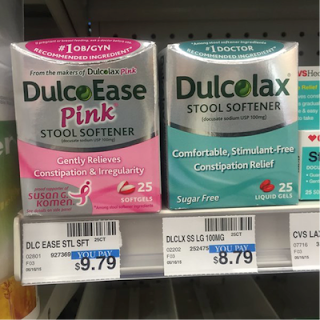Entry #4 - Pink or Blue?
You and your girlfriend have been dating for some time now and she asks you to go to the store to buy some medicine because the Taco Bell you had for dinner last night was not sitting too well. As you finally get the the store and walk to the correct aisle, you notice something is off, a price difference according to the color of the packaging. Surely this is a mistake, there's no way that other items are affected by the color 'pink', and the label 'women' determines the price of something, right?
Wrong and the pink tax is to blame. What is the pink tax? The pink tax is a markup on goods and services marketed to women and for which men pay less for similar products and services. Companies are basically marketing off the societal ideology and standards that women are held to.
Not just medicines, but items such as razors and clothing are all affected by the markup of the pink tax. A report done by the Joint Economic Committee shows that forty-two percent of women pay more for items and services based on gender. The same article concludes that not only products but also services are well are affected by the markup. The Committee reported a survey was done in 20ll where one hundred salons had been surveyed and eighty-five of them claimed to have charged more for a basic women's cut vs a basic men's cut; these women paid about fifty-four percent more than the men had been charged.
Many efforts have been made in order to end the pink tax, but attempts to end this problem continue to fail. Countless studies have been conducted in order to prove that this is an issue, but Judicial proceedings are just out of reach. Not only is the pink tax an issue the courts are passing off, but the tampon tax and the gender wage gap are all problems that women in society are attempting to fight. The solution? Opting for more gender-neutral care products and services. Personal care and hygiene should not be an extra tax placed on the final price and available for everyone, especially when it comes to the tampon tax. 500 million lack complete access to menstrual health and hygiene says Odette Hekster from PSI. Feminine care companies profit from basic health-related necessities and consider tampons to be luxuries because so many women do not have access to these basic hygiene products.
Continuing to challenge the court system and pressuring them with the studies and the proof collected against the pink tax will eventually cause them to appeal this tax, allowing for fair and equal prices. Not only will prices be cheaper, but more women across the globe will be able to take care of their personal hygiene necessities and feel better about themselves.




Hi! I had no idea what the Pink Tax was previously, and I was shocked to learn exactly what it is. It is alarming to think that women are being charged more for items that are very similar to what men use. The pictures that you included were extra frightening. That is a major price difference between the men's and women's razors, even though it is practically the same thing. I am curious, do you know what the "reasoning" behind the pink tax is? Thank you so much for your entry and for making me aware of this issue. Great job!
ReplyDeleteThe explanation you gave on the pink tax was great! It was clear and you introduced the ideas you were writing about with great understanding. I vaguely knew of the pink tax before reading, but I was unaware of how extensive it was, like how it even extended to services. I did know that feminine products are considered luxuries and I completely agree that companies and the government deprive women of hygiene in favor of profit.
ReplyDeleteI love pink and would buy anything in pink. I just realized the idea of pink tax and true be told pink items cost more than normal item. Companies do profit more on pink products because of people like me, no matter the price, if it is pink I got to have it!
ReplyDelete